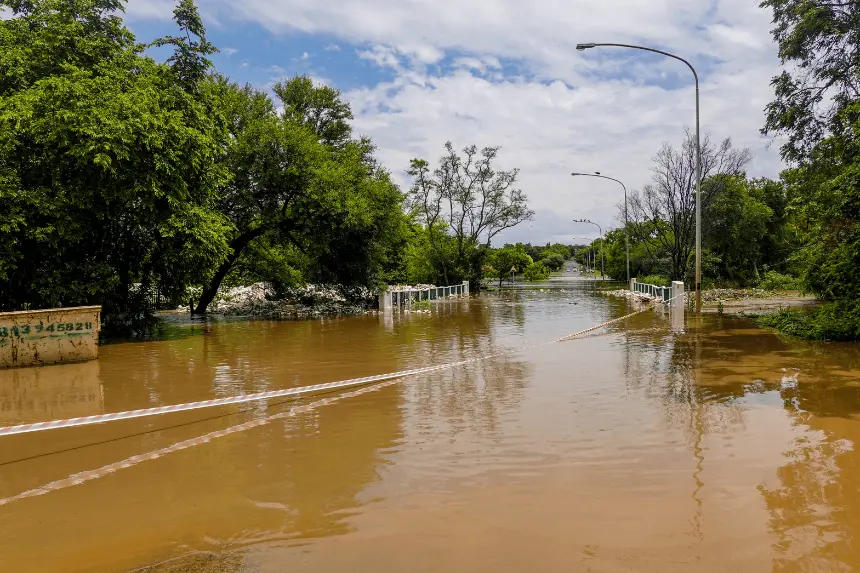After the deadly flash floods in Kerrville, Texas, that killed at least 96 people, the state’s emergency response system is getting a lot of attention. Officials are getting tough questions about the late emergency messages that didn’t warn people in time. Even though weather services warned about it, important messages about the rising Guadalupe River weren’t carried out until hours later. This left many people unprepared for the fatal flooding. People are angry about the delays, and they are worried about how well the state’s emergency response mechanisms work. As recovery efforts continue, officials are being asked to explain what went wrong and make sure that emergency procedures are better in the future to avoid such deaths.
What went wrong with emergency communications?
Texas officials are getting more and more pressure to explain why it took so long to send out emergency alerts to people in Kerrville, a town that was hit hard by flash floods on July 4th. Many people didn’t get the warning in time, even though there were early signals and weather forecasts that said there would be significant floods. This led to the loss of life.
After an estimated 100 billion gallons of rain fell, the Guadalupe River rose quickly in Kerrville, which is in Kerr County. The floodwaters killed at least 120 people, including 36 children, many of whom were at a Christian camp nearby. The state’s emergency response system is now getting a lot of attention as officials look into what caused the catastrophe. Here is the link to our article on the Southeastern Flooding Impact
What went down in Kerrville?
ABC News got audio recordings that showed a firefighter asking the Kerr County Sheriff’s Office to send out an emergency alert to citizens early on July 4th. At 4:22 AM, the firefighter asked for an urgent warning to be sent out to warn people about the quickly rising floods. But sources say that the initial emergency alert through the county’s CodeRED system didn’t go out until almost six hours later.
Local leaders are upset about the delay. Kerr County officials, like Sheriff Larry Leitha, have said that it took longer than they thought it would to send out alerts. Sheriff Leitha also said that finding victims and missing people was his top concern, which made the timing for sending out alerts even more problematic.
Why didn’t people get a warning sooner?
The timeliness of the emergency alerts has been one of the most important challenges since the flood. Even though the National Weather Service gave many early warnings about the weather, many people didn’t know how bad the situation was because they were worried about flooding. Some people have said that the delayed response was due to faulty cell phone coverage, not realizing how severe the storm was, and the fact that people are used to hearing flood warnings all the time.
Even though officials sent out weather alerts before the storm, people living in flood-prone areas may not have fully understood how serious the situation was. Officials stated that the combination of these factors led to the unfortunate outcome. Here is the link to our article on Queensland Flood Devastation
What are the authorities doing?
After the disaster, Texas Governor Greg Abbott asked the federal government for help. President Donald Trump issued a disaster designation, which allowed the Federal Emergency Management Agency (FEMA) to go to work. In addition, more than 2,100 emergency responders, including private helicopters, drones, and dogs trained to find dead bodies, have been searching for the missing victims.
As of Thursday, 160 people are still missing, including five kids and one counselor from Camp Mystic. Despite extensive efforts to rescue people, officials reported that no one has emerged alive from the floods.
Did Kerrville’s emergency response fail to communicate properly?
At a news conference, Kerrville Police community services officer Jonathan Lamb was asked about possible problems with police radio systems that might have caused communication problems, but he couldn’t give any immediate answers. Police and emergency services are still looking into what caused the communication delays and how well the current flood response systems work.
Kerr County officials are also working hard to find and identify the victims. We are still trying to figure out exactly what went wrong with the timeliness of the emergency response.
Final Thoughts: A Call for Better Preparedness
The tragic events in Kerrville have revealed that the emergency alert system is ineffective, leading people to question whether Texas is adequately prepared for major natural disasters. As recovery operations continue, officials need to think about what they learned from this catastrophe so that people in Texas, especially those living in flood-prone areas, know that their safety always comes first, particularly during crises. To prevent further devastation, they need to know that their safety will always come first, especially in times of crisis. Improving emergency alert systems will be crucial for avoiding delays and ensuring timely responses in such situations.








